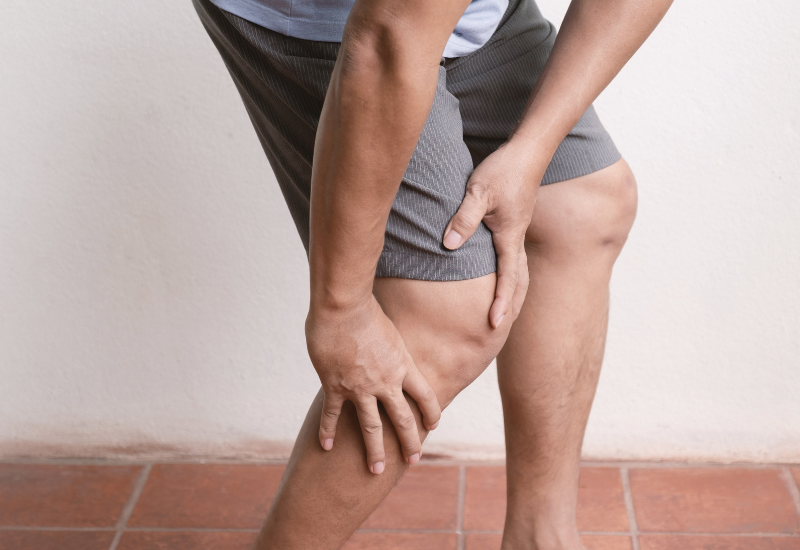Muscle Weakness & Myopathy

Our Services
Let's Get In Touch

Muscle Weakness & Myopathy
A myocyte, also known as a muscle cell, is the basic building block of muscle tissue. Myocytes are specialized cells that have the ability to contract and generate force. They are responsible for the movement of the body and play crucial roles in various bodily functions.
Muscle fibers are elongated myocytes that make up muscle tissue. Each muscle fiber is a single cylindrical cell containing multiple nuclei and is surrounded by a plasma membrane called the sarcolemma. Muscle fibers are further organized into bundles and are responsible for the contraction and relaxation of muscles.
A sarcomere is the smallest functional unit of a muscle fiber. It is the segment between two Z lines and contains the proteins actin (thin filaments) and myosin (thick filaments) that slide past each other during muscle contraction. The arrangement of these filaments gives skeletal and cardiac muscle its striated appearance.
Muscle formation involves several processes:
- Myogenesis: The development of muscle cells from precursor cells called myoblasts. These myoblasts fuse to form myofibers (muscle fibers).
- Hypertrophy: The increase in the size of muscle fibers due to the synthesis of more myofibrils, often stimulated by resistance training or exercise.
- Repair and Regeneration: Muscle tissue can repair itself after injury through satellite cells, which can proliferate and differentiate into new muscle fibers.
There are three main types of muscle tissue:
- Skeletal Muscle:
- Striated and under voluntary control.
- Responsible for body movements and posture.
- Cardiac Muscle:
- Striated but involuntary.
- Found in the heart and responsible for pumping blood.
- Smooth Muscle:
- Non-striated and involuntary.
- Found in walls of hollow organs (e.g., intestines, blood vessels) and responsible for movements like digestion and blood flow.
Muscle damage can occur due to various reasons:
- Trauma: Direct injuries, such as strains or tears, from accidents or falls.
- Overuse: Repeatedly stressing the muscles can lead to microtears, causing soreness and damage.
- Disease: Conditions such as myopathy and muscular dystrophy lead to progressive muscle damage.
- Nutritional Deficiencies: Lack of essential nutrients can weaken muscles and contribute to damage.
Muscle damage can be classified into several types:
- Acute Injury: Sudden muscle tears or strains often due to overstretching or excessive load.
- Chronic Injury: Repeated microtraumas that result in cumulative damage over time.
- Degenerative Damage: Gradual weakening and wasting of muscle tissue due to disease (e.g., myopathy, muscular dystrophy).
Symptoms of myopathy and muscle dystrophy can include:
- Muscle Weakness: Difficulty performing everyday activities.
- Muscle Wasting: Loss of muscle mass, leading to a thinner appearance.
- Fatigue: Increased tiredness during physical activity.
- Cramps and Pain: Discomfort in muscles, especially after exertion.
- Abnormal Gait: Changes in walking patterns due to muscle weakness.
Causes of myopathy and muscle dystrophy can be classified into several categories:
- Genetic Causes: Inherited conditions (e.g., Duchenne muscular dystrophy) caused by mutations in specific genes.
- Metabolic Disorders: Conditions affecting the body’s ability to use energy properly (e.g., mitochondrial myopathies).
- Autoimmune Disorders: Immune system attacks on muscle tissue (e.g., inflammatory myopathies).
- Toxic Exposures: Damage from certain medications, alcohol, or toxins.
- Infections: Viral or bacterial infections that affect muscle tissue.
Treatment is crucial for:
- Improving Quality of Life: Managing symptoms can help individuals maintain independence and functionality.
- Preventing Further Damage: Early intervention can slow disease progression and minimize complications.
- Enhancing Muscle Strength: Rehabilitation can improve muscle function and overall strength.
- Managing Associated Conditions: Addressing secondary issues related to muscle damage, such as respiratory or cardiac problems.
Treatment options for myopathy and muscle dystrophy may include:
- Physical Therapy: Tailored exercise programs to improve strength, flexibility, and mobility.
- Medications: Steroids to reduce inflammation or other drugs to manage specific symptoms.
- Nutritional Support: Diet plans to ensure adequate nutrient intake for muscle health.
- Assistive Devices: Use of braces, wheelchairs, or other aids to support mobility.
- Surgery: In some cases, surgical interventions may be necessary to correct deformities or improve function.
- Genetic Counseling: For inherited conditions, counseling can provide information and support to families.
Conclusion
Myocytes and sarcomeres are fundamental components of muscle tissue, which plays a vital role in movement and bodily functions. Understanding the causes and effects of muscle damage, particularly in conditions like myopathy and muscular dystrophy, is crucial for effective management. With appropriate treatment and interventions, individuals can maintain their quality of life and improve muscle function.

